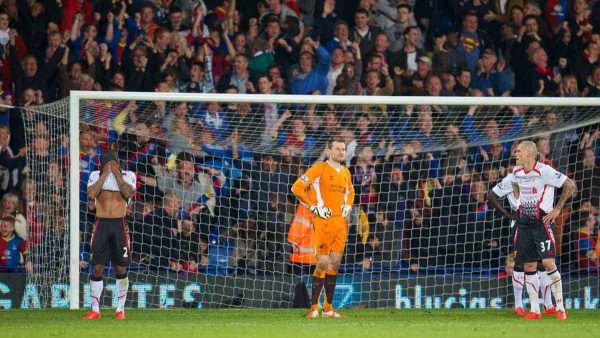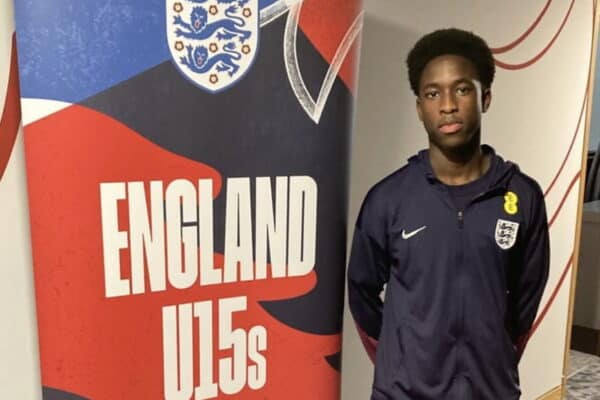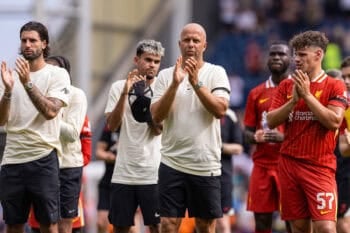Liverpool’s title hopes all but ended in a 12 minute defensive collapse at Selhurst Park last Monday night, in which the Reds shipped three late goals. Ben Twelves discusses why Brendan Rodgers’ side have found the art of defending so difficult this season.

Monday night’s capitulation at the hands of Crystal Palace reopened the debate about Liverpool’s inability to defend, a feat which has seen the Reds concede 49 league goals this season. Brendan Rodgers’ side have powered through this campaign thanks to a staggering 99 league goals scored up the other end, and the stunning attacking play has often outweighed the defensive uncertainty for the most part.
But as illustrated at Selhurst Park, outscoring the opposition every game is impossible, meaning there will come a time when the back four have to do what theyre ultimately in the team to do – defend. The discussion around Liverpool’s defensive troubles seems to have two main scape goats – either ‘the system’ or ‘the personnel’. It’s also been argued that both factors go hand in hand to explaining why Rodgers’ men leak such a vast amount of goals.
The System
It’s no secret to the footballing world how the Liverpool manager sets his team up. Full-backs push on, taking up positions high up the pitch almost as wingers, full-filling the wide duties for the team attacking and defending. This leaves two at the back on occasions; with the just the central defenders trusted to deal with what usually is one striker in most cases and with Steven Gerrard in the controlling midfield role sitting slightly in front.
Playing this way does expose Liverpool to the counter attack, with big areas of space to exploit for the opposition in the areas where the full-backs have vacated to join the attack. Also with the captain’s immobility, he can’t eat up ground and offer the necessary protection to snuff out advancing attacks.
Rodgers deploys a high defensive line with the aim of keeping opposition swamped and suffocated in their own half, as far away from danger as possible. But when in a defensive shape and defending under pressure, Gary Neville’s and Jamie Carragher’s analysis of recent games on Monday Night Football has shown the tendency of the Reds’ back line to drop deeper than necessary, failing to push out and up the pitch.
Finally, I believe that most of LFC's defensive weakness is systemic, not personnel. If you upgrade the D personnel how much improvement 1/2
— Dan Kennett (@DanKennett) May 6, 2014
Will it actually make? There's probably far more improvement to be made from changing the system but do you really want to do that? 2/2
— Dan Kennett (@DanKennett) May 6, 2014
Dropping the line in a team that wants to press the ball with aggression inevitably creates gaps in between defence and midfield, making it harder for those pressing to condense play and win the ball back quickly. Monday saw a complete lack of midfield support as Liverpool went in search of goals to claw back Man City’s goal difference and it was highlighted best in Palace’s first and equalising goals, as the space between the back four and midfield allowed Red and Blue shirts in between the lines where they could then cause danger.
If the Liverpool boss orders his team to hold a high-line but they then fail to carry out the instruction, whether it’s because they’re “mentally weak” as Carragher suggested, tired or natural instinct takes over, that is down to the other side of the argument – the personnel.
Personnel Problems
The high-line adopted by Rodgers is something that is unnatural to most of the defenders he inherited. Kolo Toure was signed due to his experience of playing with that system at Arsenal, and the Ivorian displayed real leadership of it in the back of line throughout pre-season and in the early part of the campaign.
But Toure’s decline in form after a promising start to his Anfield career meant Martin Skrtel stepped in alongside Daniel Agger before Mamadou Sakho arrived on Merseyside. It’s important to remember that Skrtel was well out of the managers’ plans at the back end of last season for some terrible displays as he struggled to adapt.
This season, the Slovakian has enjoyed a much better year but it is evident from the way he defends when instincts take over, that holding and maintaining a higher position is still uncomfortable. The same can be applied to Glen Johnson, who also was highlighted to persistently “sag” as Neville described it, leading to Liverpool’s problems.
It shows that despite the hours of coaching and translating of methods, the personnel at Rodgers’ disposal aren’t naturally the type of defenders you would pick to play in this system. It requires defenders who defend on the front foot, are strong in 1v1 situations and step forward to meet the challenge. When under pressure, we see Skrtel and Johnson in particular drop deeper – doing what is natural to them, but the opposite of what’s required.
Sakho vs Agger?
Questions have been raised over Rodgers sticking with Sakho instead of Agger and how such a decision could potentially have impacted on Liverpool defensively due to a perceived ‘lack of experience’.
The Frenchman is no stranger to pressure of the big occasion as he captained Paris Saint Germain at the age of just 17. He was brought to Anfield because the manager sees a relatively young centre back who can continue to learn and play his way going forward.
It also mustn’t be overlooked just how many individual errors have directly led to goals and this could be as a result of players being uncomfortable in the way that they’re playing. Therefore signing players who are naturally suited to this style will help as Rodgers fine tunes his defence.
We don’t have the players to defend brilliantly and attack brilliantly; in XI and in squad. (But none of what I say is to “excuse” 3-0 slip)
— Paul Tomkins (@paul_tomkins) May 5, 2014
Conclusion
Although the system does have its defensive flaws, the team currently lack enough of the right type of player to deal better with danger and defending generally.
The openness and attacking nature of Liverpool’s style of play means that there will always be an element of vulnerability defensively but summer acquisitions who are more suited to the style could help stem the flow of goals against.
[yop_poll id=”7″]

















Fan Comments